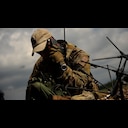Install Steam
login
|
language
简体中文 (Simplified Chinese)
繁體中文 (Traditional Chinese)
日本語 (Japanese)
한국어 (Korean)
ไทย (Thai)
Български (Bulgarian)
Čeština (Czech)
Dansk (Danish)
Deutsch (German)
Español - España (Spanish - Spain)
Español - Latinoamérica (Spanish - Latin America)
Ελληνικά (Greek)
Français (French)
Italiano (Italian)
Bahasa Indonesia (Indonesian)
Magyar (Hungarian)
Nederlands (Dutch)
Norsk (Norwegian)
Polski (Polish)
Português (Portuguese - Portugal)
Português - Brasil (Portuguese - Brazil)
Română (Romanian)
Русский (Russian)
Suomi (Finnish)
Svenska (Swedish)
Türkçe (Turkish)
Tiếng Việt (Vietnamese)
Українська (Ukrainian)
Report a translation problem










![.jpg] .jpg]](https://steamuserimages-a.akamaihd.net/ugc/450736996701339089/782BE8350BC6AC82AFE53707FE844CEAD1A31E79/)
![.gif] .gif]](https://steamuserimages-a.akamaihd.net/ugc/450736996701481052/2AB97B5BE151C1DE3335910F28D129B3ED146CFA/)
![.png] .png]](https://steamuserimages-a.akamaihd.net/ugc/450736996701611054/7C80E9377C30EEC9F5CC7F2ADB2D3E07134D5151/)
![.PNG] .PNG]](https://steamuserimages-a.akamaihd.net/ugc/450736996701619275/0A75F2B6D359E6EC4EBC91C6738AB003344AF810/)
![.png] .png]](https://steamuserimages-a.akamaihd.net/ugc/450736996701624244/E5562AE0282FD1B6EB7BCD58710E12E5C7B8967E/)
![.gif] .gif]](https://steamuserimages-a.akamaihd.net/ugc/450736996701637005/8D8E151E8FA509738C07128BFB52F4631B7A4C69/)



